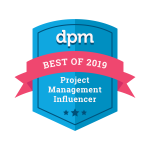 The 10X Growth Machine – How companies can innovate, scale and win, written by Misha de Sterke, is a book to build your own growth machine by using innovation as a means. It offers a very detailed description of a battle-tested methodology with a framework, a canvas, seven models and eleven tools.
The 10X Growth Machine – How companies can innovate, scale and win, written by Misha de Sterke, is a book to build your own growth machine by using innovation as a means. It offers a very detailed description of a battle-tested methodology with a framework, a canvas, seven models and eleven tools.
Creative destruction is accelerating. The average life expectancy for European and Japanese companies is 12.5 years and around 10% of all companies disappear each year. Companies with a clear focus on organic growth outperform the competition and those who let costs cutting dominates their agenda, sucks the oxygen out of their growth ambitions.
In the book we get an integrated set of building blocks, principles and tools to create different (disruptive, sustaining and efficiency) innovations as a structural way of working. The big idea is to build a second operating system (the Growth Machine) besides the “mothership”, facilitating a discovery-driven entrepreneurial way of working embedded in a system of processes, metrics and the leadership that nourishes it (note reviewer: compare Kotter’s Dual Operating System). The Growth Machine is a separate system (like an innovation lab, or independent business unit) that co-exists with the mothership and is managed by members of the executive board in the form of a venture board. The purpose of the Growth Machine is to ideate, validate and scale disruptive ventures. In the attached figure (can be downloaded at www.10Xgrowthmachine.com) we see the framework to build and develop growth. To scale corporate startups successfully and develop an entrepreneurial culture the following building blocks need to be implemented:
In the attached figure (can be downloaded at www.10Xgrowthmachine.com) we see the framework to build and develop growth. To scale corporate startups successfully and develop an entrepreneurial culture the following building blocks need to be implemented:
- Growth Strategy: Growth strategy and Portfolio management (optimize the core, review the core, future growth innovation initiatives and the graveyard), C-level alignment.
- Growth governance: Lean innovation process and venture boards, growth policy playbook, and growth accounting. Venture board maturity phases are – we need to try something new, let’s give this a shot, we’re starting to get it, tackling build vs buy vs partner, returns are coming home, and capability installed. The point of growth accounting is to identify and track leading indicators for future growth. A metric board for growth accounting to show activity and actionable metrics at strategic, tactical and operational level gives valuable insights. Measure to improve, not to judge! In the book you get many pitfalls and common mistakes when measuring innovation.
- Corporate venture building: Implementation of growth strategies and a lean startup way of working (small ninja teams). Steps in the innovation process are ideation sprint (1 – 3 weeks), customer discovery (10 – 13 weeks), growth MVP phase (12 – 15 weeks) and launch program (13 – 26 weeks). The intrapreneurship function can be implemented in four different or combined ways: producer model, enabler model, opportunist model and advocate model.
- Growth culture: Awareness and training in a new set of principles (think bigger and bolder, customer obsession, scarcity mindset, relentless learning &relentless high standards, skeptic of proxies, adopting external trends, fast decision-making and ownership). A separate chapter is dedicated to innovation management. How to deal with the tension between the modus operandi (processes, metrics, etc.) of the big company and the small corporate startup.
- Scaling growth: How to scale the startup to a scaleup? Independent business unit (separate)? Ambidextrous set-up (separate and integrate Spin out?
In the last chapter the author elaborates on the change management pathways to become a systematic growth machine. We get several tips related to the three phases to provide some guidance:
- Phase 1: Art of the start – build first success, learn how it works and create allies: the art of the start, don’t create blueprints, develop a growth mindset, executive sponsorship, determine the corporate entrepreneurship model, create ambassadors and neutralize the naysayers and quick wins, and speed of learning and kill-rates.
- Phase 2: Governance – implement system building blocks, engage the organization: communicate success, executive focus and define business metrics that matter, create scarcity, first identify champions on all levels, involve staff & build a playbook of different rules and policies, and act as an investor, identify portfolio gaps.
- Phase 3: Scale – perfect the practice, build A-teams within the organization: perfecting the daily practice, hire the best and build great teams and foster ownership in the line organization.
Throughout the book several tools (canvas, checklist) are explained and available at www.10Xgrowthmachine.com. E.g. the 10X Growth Machine canvas is a visual tool that executives can use to build their roadmap of implementation. Another one is the disruptive analysis checklist with ‘early warning signals’ to understand where small opportunities arise.
Conclusion A must read for senior managers and innovation officers who want to get insights and support how to turn their organization into a growth machine. This book offers a very detailed description of a battle-tested methodology with a framework, a canvas, seven models and eleven tools. All models and tools are explained in great detail. In-depth interviews with senior managers help to understand specific topics (e.g. FrieslandCampina, RABO Ventures, Startupbootcamp, Athlon, Unit4) as well as several cases. The accompaning website offers access to all mentioned models and tools.
To order (managementbook): 10X Growth Machine
To order (Amazon): 10X Growth Machine
















Pingback: Overview of my year 2020 book reviews | Henny Portman's Blog